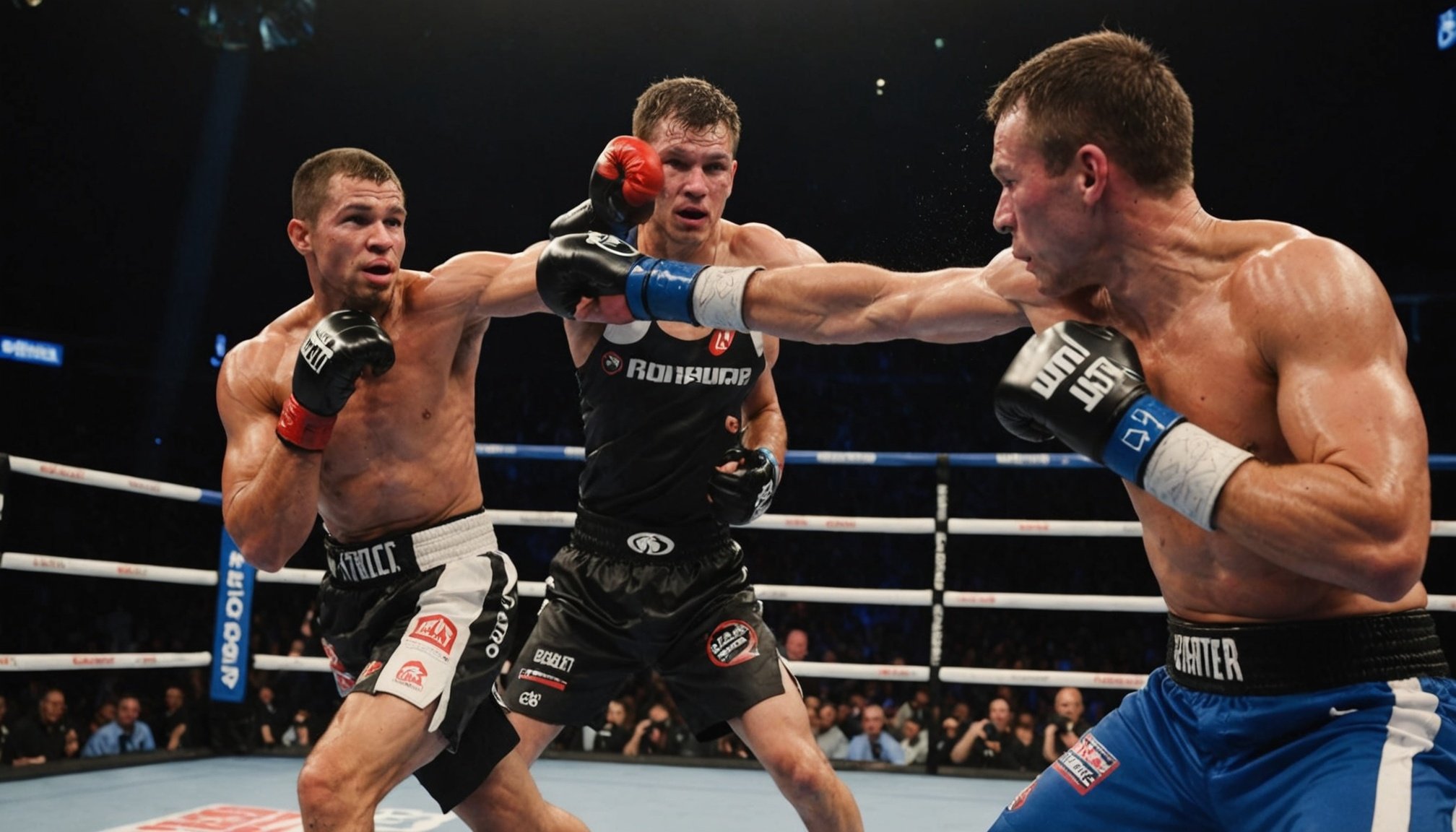In the realm of combat sports, whether you are an aspiring fighter or a seasoned professional, understanding your opponent’s fighting style is crucial. A fighter’s strategy is not merely about executing their own techniques but also about responding effectively to the opponent in front of them. Each style has its own strengths and weaknesses, and as you engage in training, recognizing these elements can elevate your performance in the ring or cage. In this article, we will explore the importance of analyzing your opponents, the various martial arts styles in combat sports, and how this knowledge can be the key to victory.
The Importance of Understanding Your Opponent’s Fighting Style
Recognizing your opponent‘s fighting style is fundamental for any serious fighter. Understanding how they approach a fight will help you formulate a strategy that exploits their weaknesses while enhancing your own strengths. Each fighter brings a unique combination of skills, techniques, and tactics, shaped by their training and experience. For example, a Muay Thai specialist may utilize strong kicks and knee strikes, while an MMA fighter might incorporate wrestling and grappling techniques to control the fight.
Also to read : How can athletes develop resilience through adversity in combat sports?
When you learn about different styles like boxing, karate, or jiu-jitsu, you begin to see patterns in how fighters operate. Analyzing these patterns can give you a strategic advantage. You can anticipate their moves, including when they are likely to apply pressure with punches or when they might attempt to grapple. This foresight allows you to prepare counterstrategies that can help you stay ahead in the fight.
Moreover, understanding your opponent‘s style assists you in developing a proper game plan. For instance, if you are facing a fighter known for their explosive striking, your strategy may involve staying mobile and utilizing distance to negate their power. Alternatively, if your opponent excels in ground fighting, you may prioritize maintaining the fight on your feet, where you feel more comfortable.
Also to see : How can combat athletes use technology to analyze and improve their performance?
This strategic preparation is not limited to pre-fight preparations. During the fight itself, being aware of your opponent‘s tendencies can help you make quick adjustments. If you notice that they frequently overcommit to certain techniques, you can exploit these openings for counters. Overall, having a solid understanding of your opponent’s fighting style is not just about knowing what to expect; it is about being ready to adapt and respond in real-time.
Different Fighting Styles and Their Characteristics
In combat sports, a variety of styles exist, each with its unique set of techniques and strategies. A few prominent styles include Muay Thai, Brazilian jiu-jitsu (BJJ), boxing, and wrestling. Understanding the characteristics of these styles enhances your ability to devise effective strategies.
Muay Thai is known for its powerful strikes using fists, elbows, knees, and shins. Fighters trained in this style often adopt an aggressive approach, using pressure to keep their opponents on the defensive. They rely on clinch techniques, which can be critical in controlling the pace and flow of a fight. When facing a Muay Thai fighter, it is essential to remain unpredictable and avoid standing too close, where you might become susceptible to their devastating knee strikes.
Boxing emphasizes footwork, head movement, and powerful punches. A boxer who excels at slipping punches and countering can create opportunities to score points effectively. If your opponent is a skilled boxer, you may need to utilize a broader range of techniques, including kicks or takedowns, to keep them guessing.
On the other hand, Brazilian jiu-jitsu focuses on ground control and submission techniques. A fighter well-versed in BJJ may prefer to take the fight to the ground, where they can leverage their grappling skills. If you are facing a BJJ practitioner, it becomes crucial to maintain distance and avoid getting taken down. Knowing that they might attempt to pull guard or sweep from the bottom can help you defend against their ground strategies.
Wrestling, another prominent style, emphasizes control and takedowns. Wrestlers are often adept at dictating the pace of a fight. If you are up against a wrestler, staying mobile and avoiding being taken down is vital to maintaining your advantage. The ability to understand these different styles will enhance your fighting IQ and help you adapt your techniques accordingly.
Analyzing and Adapting During Training
Training is not just about perfecting your own techniques; it is also an opportunity to analyze various fighting styles and how they can influence your strategy against different types of opponents. By sparring with fighters from diverse backgrounds, you can gain valuable insights into how different techniques work in practice.
During training sessions, focus on recognizing your training partners’ styles. If you frequently spar with a Muay Thai practitioner, observe how they set up their strikes and how they respond when pressured. This observation will equip you with the knowledge to anticipate similar movements from opponents when you face them in competition. Sparring sessions are a goldmine for gathering data on what works against specific styles.
Moreover, it is beneficial to review video footage of your opponents. Watching their previous fights can reveal tendencies and preferences in their fighting style. Analyze how they react under pressure and which techniques they favor in various situations. This analysis will allow you to identify their weaknesses and strategize your approach accordingly.
Adapting your training to focus on these observations is key. For instance, if you notice that you struggle against aggressive strikers, incorporate drills that help you practice evasion and counterattacks. Conversely, if your opponent tends to overcommit to strikes, work on your timing to execute effective counters.
The more you expose yourself to different styles, the more adaptable you become. This adaptability is essential in the fast-paced world of combat sports, where split-second decisions can determine the outcome of a fight. In conclusion, integrate analysis and adaptation into your training regime to build a robust foundation for any encounter with a diverse array of opponents.
Psychological Aspects of Understanding Your Opponent
Understanding your opponent’s fighting style is also a matter of psychological warfare. Knowledge breeds confidence, and when you are well-prepared, it can significantly affect your mental state going into a fight. When you know what to expect from your opponents, you can approach the fight with a clear mind, reducing anxiety and increasing your focus.
Conversely, if you are unfamiliar with your opponent’s techniques, this uncertainty can lead to hesitation and indecision in the ring. You might find yourself second-guessing your moves or overthinking your strategies, which can hinder your performance. Familiarity with their style allows you to enter the fight with a decisive mindset, knowing how to respond effectively.
Moreover, understanding your opponent can give you a psychological edge. If you demonstrate confidence in your knowledge of their weaknesses, it can intimidate them and disrupt their game plan. When your opponent senses that you are prepared, they may become more hesitant, which opens up opportunities for you to capitalize on their mistakes.
This psychological aspect extends to the pre-fight build-up as well. Engaging in conversations with your opponent or studying their demeanor can provide insights into their mindset. If a fighter is overly confident or dismissive, they may be undervaluing your abilities. Conversely, a fighter who seems overly anxious may indicate that they are not as secure in their strategy. These subtleties can inform your approach in the fight and enhance your overall strategy.
In conclusion, the psychological dynamics of understanding your opponent’s fighting style play an essential role in the outcome of a match. Cultivating this understanding allows you to approach each fight with confidence, making you a more formidable competitor.
In the world of combat sports, understanding your opponent‘s fighting style is not just an advantage but a fundamental aspect of formulating effective strategies. From analyzing different styles to adapting during training and leveraging psychological insights, knowledge of your opponents empowers you to make informed decisions in the ring.
As you continue to develop your skills, remember that each fighter is unique, and being adaptable is key to your success. By integrating these insights into your training and strategy, you will find yourself not only becoming a better fighter but also one who is capable of outsmarting and outmaneuvering your opponents in the heat of battle. Embrace the challenge, continuously learn, and let your understanding of fighting styles guide you to victory.











